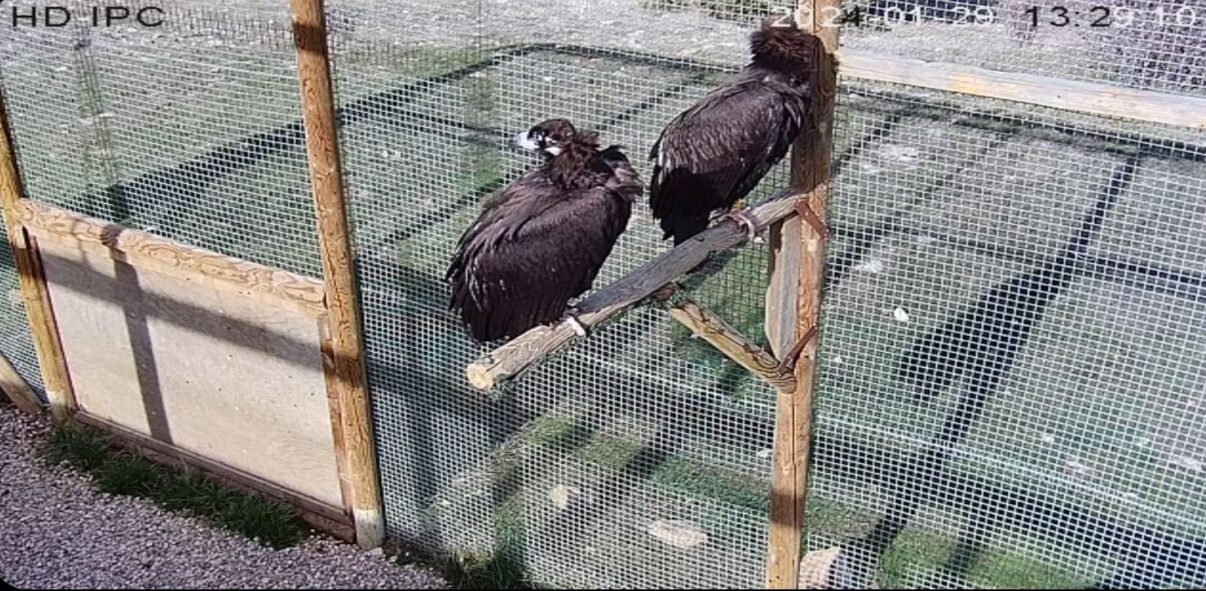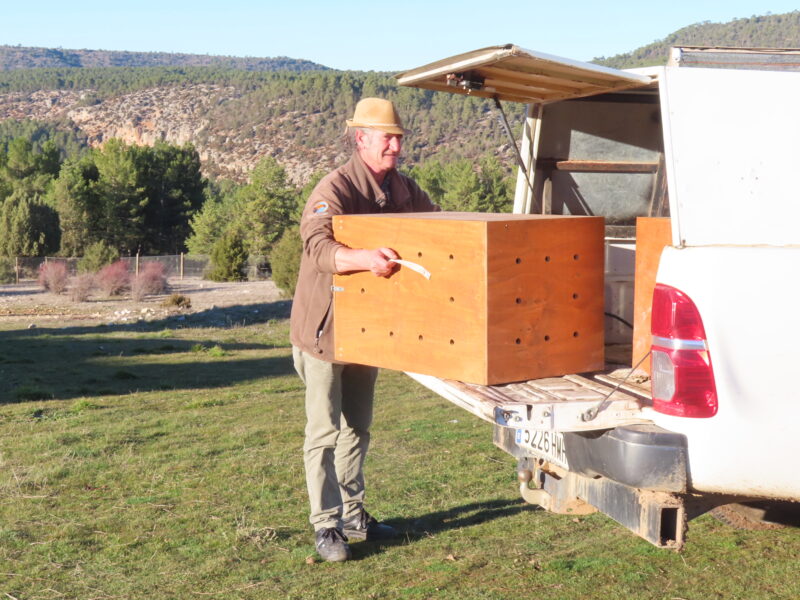Two Cinereous vulture specimens (Aegypius monachus) have arrived at the acclimatisation aviary of the reintroduction project in Alto Tajo and Serranía de Cuenca regions.

The birds had been found with health problems in Ciudad Real province and they recovered in the Chaparrillo Wildlife Recovery Centre before being included in the reintroduction programme. Now they are part of this reintroduction programme, which aims to bring the Cinereous vulture back to the Iberian Highlands. The project is led by the Government of Castilla-La Mancha and works on the field are carried out by Rewilding Spain and Terra Naturalis association. Thanks to this initiative, 17 specimens have already been released in the landscape, where the Cinereous vulture disappeared as a resident species almost a hundred years ago.
The new aviary guests will stay at this acclimatisation enclosure until early October, when they will be released into their new habitat. All the specimens released in the framework of the reintroduction programme are previously tagged with coloured rings for remote visual identification and with a GPS transmitter that allows to track all their movements.

Cinereous vultures reach sexual maturity when they are four or five years old. This 2024, some of those that have already been released will reach this age, so it is expected that they will start their first mating behaviours to breed again in the landscape and thus join the griffon vulture (Gyps fulvus) and the Egyptian vulture (Neophron pernopterus) as the great necrophagous bird species in the Iberian Highlands.
Want to know more?
- Five new artificial nests to favour the Cinereous vulture settlement in the Iberian Highlands
- Cinereous vulture comeback in the Iberian Highlands takes another step forward
